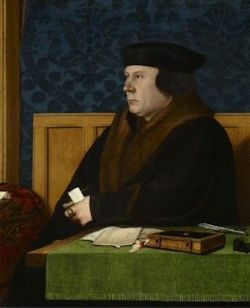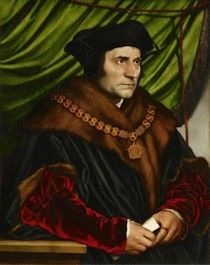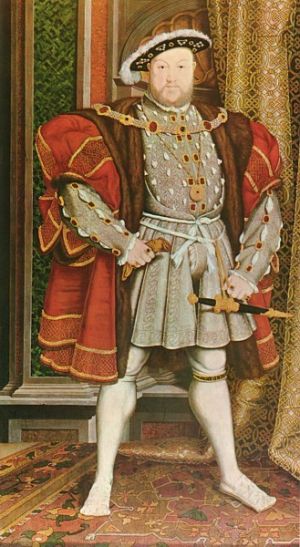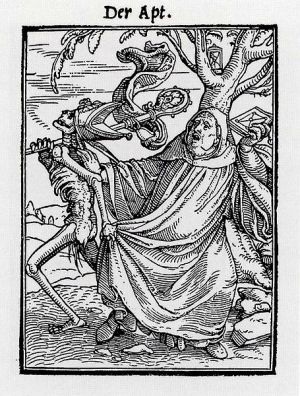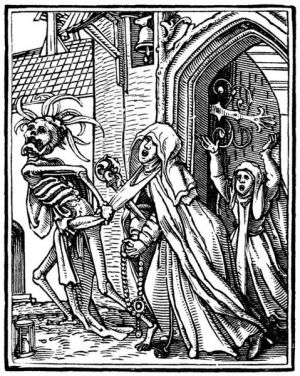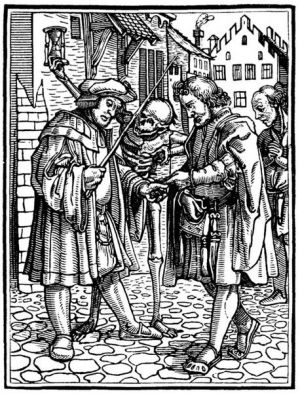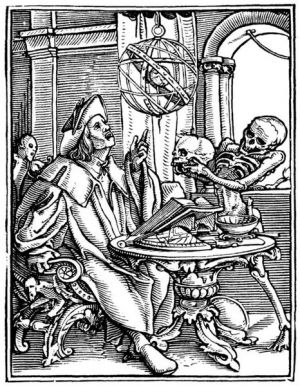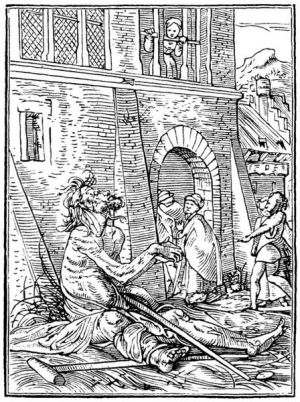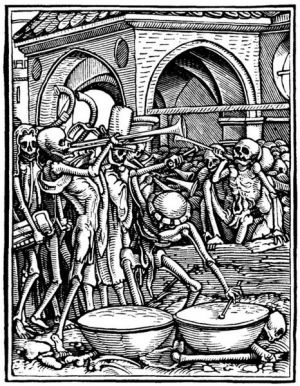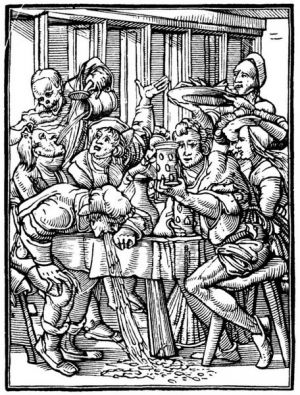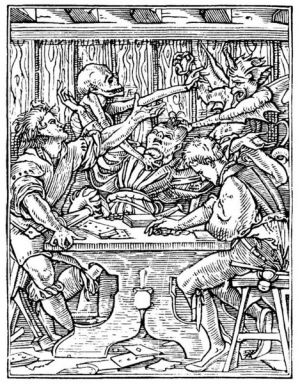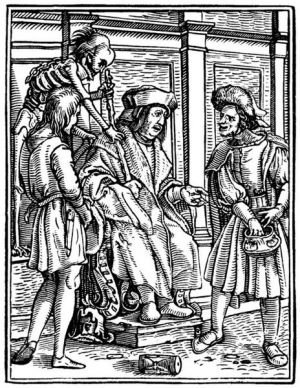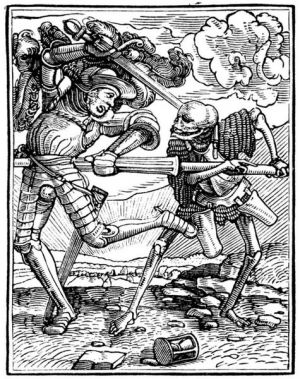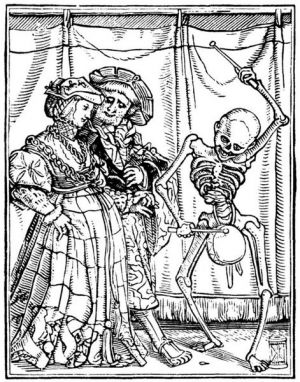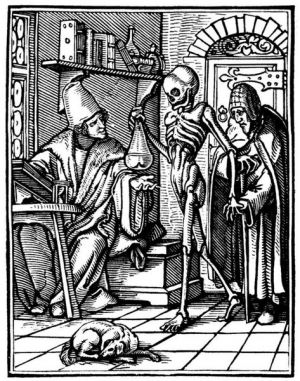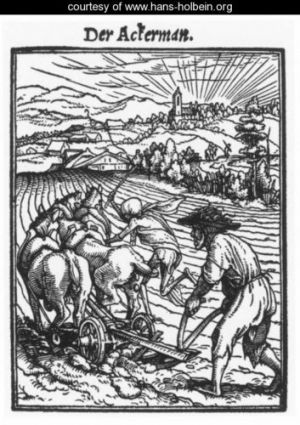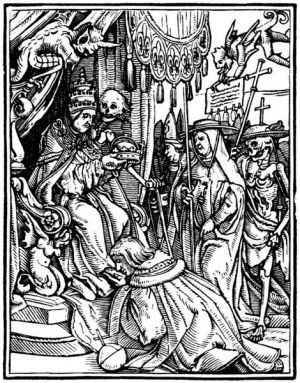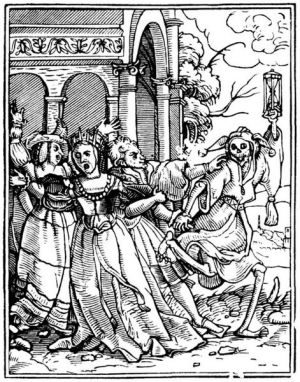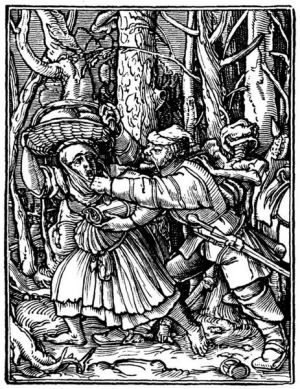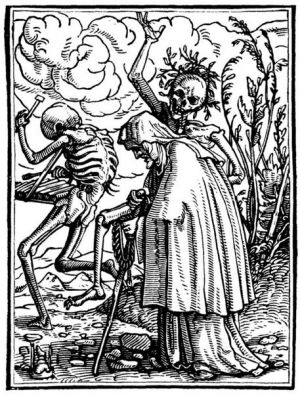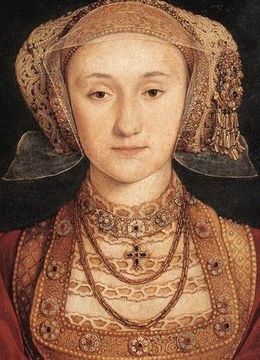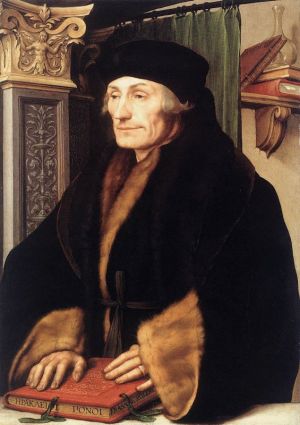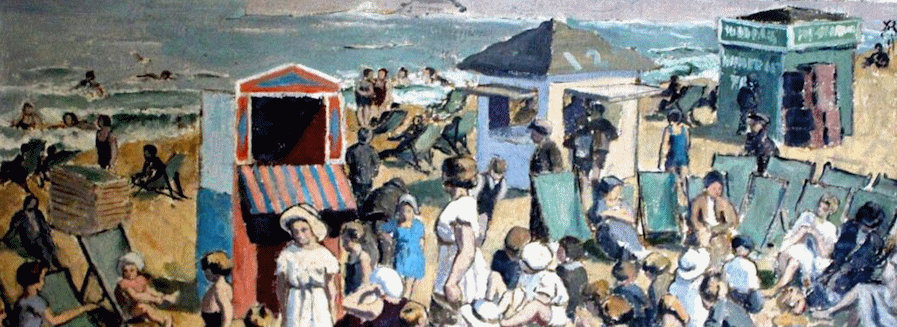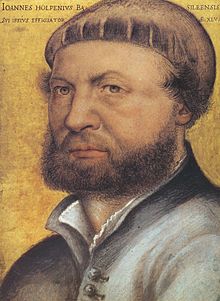Holbein was born in Augsburg in southern Germany in the winter of 1497-8. He was taught by his father, Hans Holbein the Elder. He became a member of the Basel artists' guild in 1519. He travelled a great deal, and is recorded in Lucerne, northern Italy and France. In these years he produced woodcuts and fresco designs as well as panel paintings. With the spread of the Reformation in Northern Europe the demand for religious images declined and artists sought alternative work.
Holbein first travelled to England in 1526 with a recommendation to Thomas More from the scholar Erasmus. He spent two periods of his life in England (1526-8 and 1532-43), portraying the nobility of the Tudor court. Holbein's famous portrait of Henry VIII (London, National Portrait Gallery) dates from the second of these periods. 'The Ambassadors', also from this period, depicts two visitors to the court of Henry VIII. 'Christina of Denmark' is a portrait of a potential wife for the king.In 1532 he settled in England, dying of the plague in London in 1543.
Holbein was a highly versatile and technically accomplished artist, one of the most accomplished portraitists of the 16th century, who worked in different media. He also designed jewellery and metalwork.
Holbeins series of woodcuts known as the Dance of Death (1523–26) refashions the late-medieval allegory of the Danse Macabre as a reformist satire. The Danse Macabre is an artistic genre of allegory of the Late Middle Ages on the universality of death: no matter one's station in life, the Danse Macabre unites all. It consists of the dead or a personification of death summoning representatives from all walks of life to dance along to the grave, typically with a pope, emperor, king, child, and laborer. It was produced as memento mori, to remind people of the fragility of their lives and how vain were the glories of earthly life.
Additional reference links for Holbein and his art may be found in the main menu or HERE.
-
Henry VIII - Hans Holbein, the Younger - 1540
-
Oliver Cromwell - Hans Holbein, the Younger - 1532-33
-
Sir Thomas Moore - Hans Holbein, the Younger - 1527
-
Henry VIII - Hans Holbein, the Younger - 1542
-
The Abbot - Hans Holbein, the Younger - Dance of Death (1523-1526)
-
The Abbess - Hans Holbein, the Younger - Dance of Death (1523-1526)
-
The Advocate - Hans Holbein, the Younger - Dance of Death (1523-1526)
-
The Astrologer - Hans Holbein, the Younger - Dance of Death (1523-1526)
-
The Beggar - Hans Holbein, the Younger - Dance of Death (1523-1526)
-
The Cemetery - Hans Holbein, the Younger - Dance of Death (1523-1526)
-
The Drunkard - Hans Holbein, the Younger - Dance of Death (1523-1526)
-
The Emperor - Hans Holbein, the Younger - Dance of Death (1523-1526)
-
The Fool - Hans Holbein, the Younger - Dance of Death (1523-1526)
-
The Gambler - Hans Holbein, the Younger - Dance of Death (1523-1526)
-
The Judge - Hans Holbein, the Younger - Dance of Death (1523-1526)
-
The King - Hans Holbein, the Younger - Dance of Death (1523-1526)
-
The Knight - Hans Holbein, the Younger - Dance of Death (1523-1526)
-
The Merchant - Hans Holbein, the Younger - Dance of Death (1523-1526)
-
The Noble Lady - Hans Holbein, the Younger - Dance of Death (1523-1526)
-
The Physician - Hans Holbein, the Younger - Dance of Death (1523-1526)
-
The Plowman - Hans Holbein, the Younger - Dance of Death (1523-1526)
-
The Pope - Hans Holbein, the Younger - Dance of Death (1523-1526)
-
The Queen - Hans Holbein, the Younger - Dance of Death (1523-1526)
-
The Rich Man - Hans Holbein, the Younger - Dance of Death (1523-1526)
-
The Robber - Hans Holbein, the Younger - Dance of Death (1523-1526)
-
The Senator - Hans Holbein, the Younger - Dance of Death (1523-1526)
-
The Shipman - Hans Holbein, the Younger - Dance of Death (1523-1526)
-
The Soldier - Hans Holbein, the Younger - Dance of Death (1523-1526)
-
The Woman - Hans Holbein, the Younger - Dance of Death (1523-1526)
-
Anne of Cleves - Hans Holbein, the Younger - c 1539
-
Erasmus of Rotterdam - Hans Holbein, the Younger - 1523

